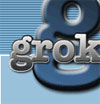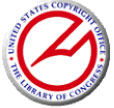        |
|
||||
ReferencesAndroutsellis-Theotokis, S., & Spinellis, D. (2004) A Survey of Peer-to-Peer Content Distribution Technologies. Athens University of Economics and Business ACM Computing Surveys, 4(36), 335–371. Band, J. (2005). The Grokster Scorecard. Retrieved November 20, 2005, from http://www.eff.org/IP/P2P/MGM_v_Grokster. Barker, D. (2005). Defining the Contours of the Digital Millennium Copyright Act: The Growing Body of Case Law Surrounding the DMCA. Berkeley Technology Law Journal Berkeley Technology Law Journal, 20, 47-63. Bowrey, K. (2005). Law & Internet Culture. Cambridge: Cambridge University Press. Brockmann, R. J. (1998). From Millwrights to Shipwrights to the Twenty-First Century: Explorations in a History of Technical Communication in the United States. Creskill, NJ: Hampton. Brockmann, R. J. (1999). Oliver Evans and his antebellum wrestling with theoretical arrangement. In Kynell, T., & Moran, G. (Ed.) Three Keys to the Past: The History of Technical Communication. (pp.63-89). Stamford, CT: Ablex. Creative Commons. (n.d.). Retrieved June 6, 2006, from http://www.creativecommons.org. CWRU Authorship Collective. (2003). Crazy Horse. Retrieved January 13, 2006, from http://home.cwru.edu/~ijd3/authorship/crazyhorse.html. DeVoss, D., Cushman, E., & Grabill, J. (2005). Infrastructure and composing: The when of new-media writing. College Composition and Communication, 57(1), 14-44. DeVoss, D., & Porter, J. (2006). Why Napster matters to writing: Filesharing as a new ethic of digital delivery. Computers and Composition, 23, 178-210. Digital Millennium Copyright Act. (2006, June 4). In Wikipedia, The Free Encyclopedia. Retrieved June 7, 2006, from http://en.wikipedia.org/w/index.php?title=Digital_Millennium_Copyright_Act&oldid=56899882. The Digital Millennium Copyright Act of 1998. Retrieved June 6, 2006, from http://www.copyright.gov/legislation/dmca.pdf. DMCA Safe Harbor Provisions. (n.d.). Chilling Effects Clearing House. Retrieved June 6, 2006, fromhttp://www.chillingeffects.org/dmca512/. Dornsife, R. (2006). Coming to (digital) terms: The work of art in the age of non-mechanical reproduction. Radical Pedagogy, 8(1). Retrieved March 9, 2006, from http://radicalpedagogy.icaap.org/content/issue8_1/dornsife.html. Duffy, J. (September 26, 2005). Groups try to chart future of IP nets. Network World. Retrieved June 12, 2006, from http://www.networkworld.com/news/2005/092605-ngn.html. Durack, K. (1997). Gender, technology, and the history of technical communication. Technical Communication Quarterly, 6, 249-60. Durack, K. (2001). Research opportunities in the US Patent Record. Journal of Business and Technical Communication. 15(4), 490-510. Extended Background on the Negotiation Process for the Fair Use Guidelines. (2002). Indiana University. Retrieved April 22, 2005, from http://www.indiana.edu/~ccumc/copyright/extend.html. Eyman, Doug. (November 11, 2005). Personal email. Galin, J. & Latchaw, J. (1997). Heterotopic Spaces Online: A New Paradigm for Academic Scholarship and Publication. Kairos, 3(1), Retrieved June 12, 2006, from http://english.ttu.edu/kairos/3.1/binder2.html?coverweb/galin/index.htm. Gurak, L. (2004). Technical Communication and Ethics in the Age of the Internet. In Day, M., & Lipson, C. (Eds.) Technical Communication and the World Wide Web. (pp. 209-221). New Jersey: Lawrence Erlbaum. Gurak, L. & Johnson-Eilola, J. (Ed.). (1998). Computers and Composition [Special issue: Intellectual property]. 15(2). Heins, M. & Beckles, T. (December 2005). Will Fair Use Survive? Free Expression in the Age of Copyright Control. Free Expression Policy Project Web site. Retrieved June 12, 2006, from http://www.fepproject.org/policyreports/fairuseflyer.html. Herrington, T. (1997). The unseen "other" of intellectual property law. Kairos 3(1), Retreived June 12, 2006, from http://english.ttu.edu/kairos/3.1/binder2.html?coverweb/ty/kip.html. Herrington, T. (1998). The interdependence of fair use and the first amendment. Computers and Composition, 15(2), 125-143. Hesse, D. (2005). Who owns writing? College Composition and Communication. 57(2), 335-357. (Video available: http://inventio.us/ccc/archives/2005/12/16_douglas_d_he.html International Telecommunications Union. (2006). Retrieved July 13, 2006, from http://www.itu.int/home/. The Internet Engineering Task Force. (n.d.). Retrieved July 13, 2006 from http://www.ietf.org/. Johnson-Eilola, J. (1997) Intellectual Property: Questions and Answers. Kairos 3(1), Retrieved June 12, 2006, from http://english.ttu.edu/kairos/3.1/binder2.html?coverweb/johndan.html. "Kairos: How Can I Contribute?" (n.d.). Kairos. Retrieved June 1, 2006, from http://english.ttu.edu/kairos/cfht.htm. Lessig, L. (1999). Code and Other Laws of Cyberspace. New York: Basic Books. Lessig, L. (2004). Free Culture How Big Media Uses Technology and the Law to Lock Down Culture and Control Creativity. New York: The Penguin Press. Limitations on liability relating to material online. (August 1, 2005). U.S. Code, Section 512. Retrieved June 12, 2006 from http://www4.law.cornell.edu/uscode/html/uscode17/usc_sec_17_00000512----000-.html. Logie, John. (2005). Parsing codes: intellectual property, technical communication, and the World Wide Web. In Day, M., & Lipson, C. (Eds.), Technical Communication and the World Wide Web (pp. 223-241). New Jersey: Lawrence Erlbaum. Lunsford, A., Rickly, R., Salvo, M. & West, S. (1996). What matters who writes? What matters who responds? Issues of ownership in the writing classroom. Kairos 1(1). Retrieved June 12, 2006, from http://english.ttu.edu/kairos/1.1/binder.html?features/lunsford/title.html. Lunsford, A. (1999). Rhetoric, feminism, and the politics of textual ownership. College English, 61(5), 1-16. Lunsford, A. (2000). Authorship and intellectual property. In Shamoon, L., Howard, R., Jamieson, S. & Schwegler, R. (Eds.), Coming of Age: The Advanced Writing Curriculum (pp. 156-68). Portsmouth, NH: Boynton Cook/Heinemann. Meserve, J. (August 29, 2005). P2P traffic still dominates the 'Net. Network World, Retrieved June 12, 2006, from http://www.networkworld.com/news/2005/082905-p2p.html. MSU's University Relations Fair Use Guidelines. (1976). Retrieved March 7, 2005, from http://www.ur.msu.edu/snav/136/page.htm. Next Generation Internet Conference. (2006). Retrieved July 13, 2006, from http://www.ngncon.com/. Porter, J. (2005). The chilling of digital information: Technical communicators as public advocates. In Day, M., & Lipson, C. (Eds.), Technical Communication and the World Wide Web (pp. 243-259). New Jersey: Lawrence Erlbaum. Porter, J. & Rife, M. (2005). WIDE Paper #1 MGM v. Grokster: Implications for educators and writing teachers. Retrieved June 12, 2006, from http://www.wide.msu.edu/widepapers/grokster/. Rehberger, D. (1997). The censoring of project #17: Hypertext bodies and censorship. Kairos 2(2), Retrieved June 12, 2006, from http://english.ttu.edu/kairos/2.2/binder2.html?coverweb/17/17.html. Star, S. & Ruhleder, K. (1996). Steps toward an ecology of infrastructure: Design and access for large information spaces. Information Systems Research, 7(1), 111-135. Valenti, J. (2003, March 13). Valenti Calls on Congress to Battle Theft of Intellectual Property, Cites Role of Organized Crime in Piracy Abroad. Press Release. Retrieved November 1, 2005, from http://www.mpaa.org/jack/2003/2003_03_13A.htm. WIDE Research Center Collective. (2005). Why teach digital writing? Kairos 10(1), Retrieved June 12, 2006, from http://english.ttu.edu/kairos/10.1/binder2.html?coverweb/wide/index.html. Wu, T. (2003). When code isn't law. Virginia Law Review, 89(4), 679-751. Yu, P. (2004). Currents and Crosscurrents in the International Intellectual Property Regime. Loyola of Los Angeles Law Review, 38, 323-443. Retrieved June 12, 2006 from http://papers.ssrn.com/sol3/papers.cfm?abstract_id=578572.
A&M Records, Inc. v. Napster, Inc., 239 F.3d 1004 (9th Cir. 2001). Retrieved July 13, 2006, from http://www.law.cornell.edu/copyright/cases/239_F3d_1004.htm Metro-Goldwyn-Mayer Studios Inc., et al., Petitioners v. Grokster, ltd., et al. 545 U.S.____(2005). Retrieved July 13, 2006, from http://www.eff.org/IP/P2P/MGM_v_Grokster/. Sony Corp. v. Universal City Studios, Inc. 464 U.S. 417 (1984). |
               |